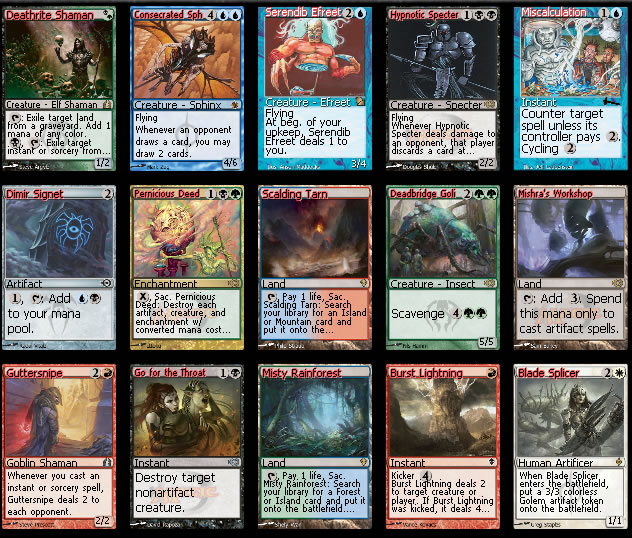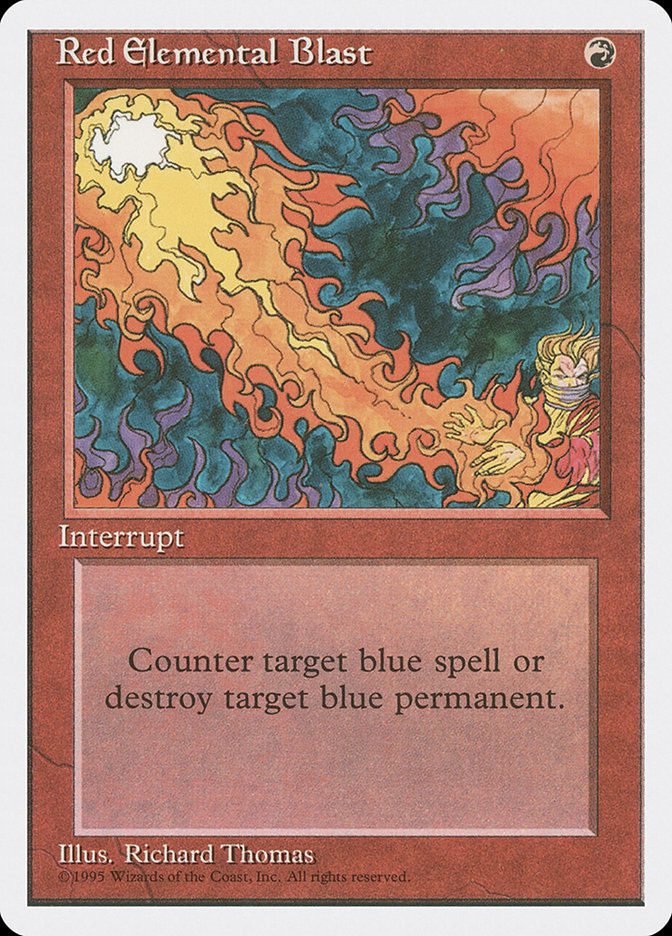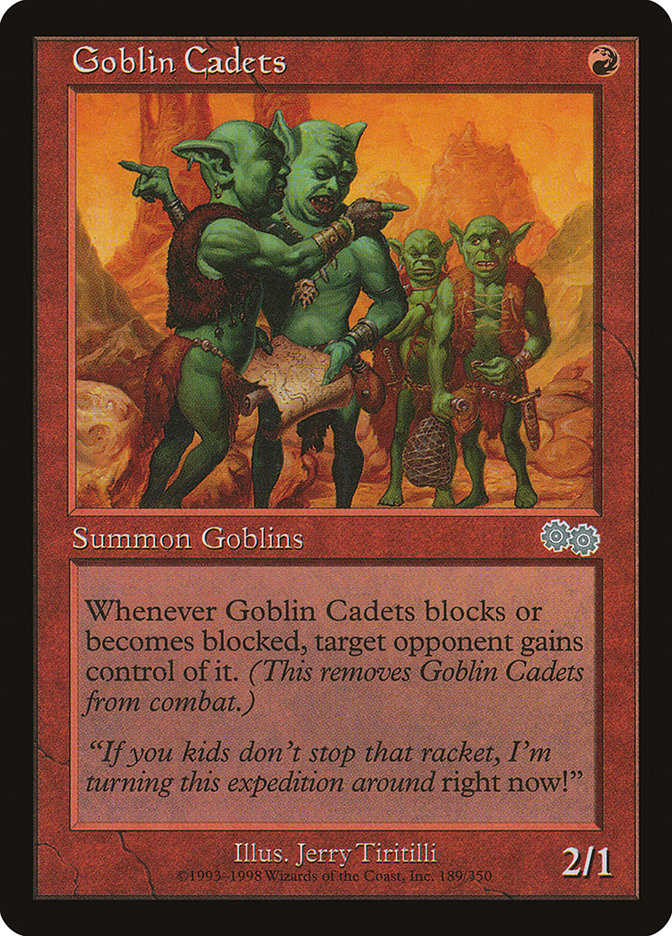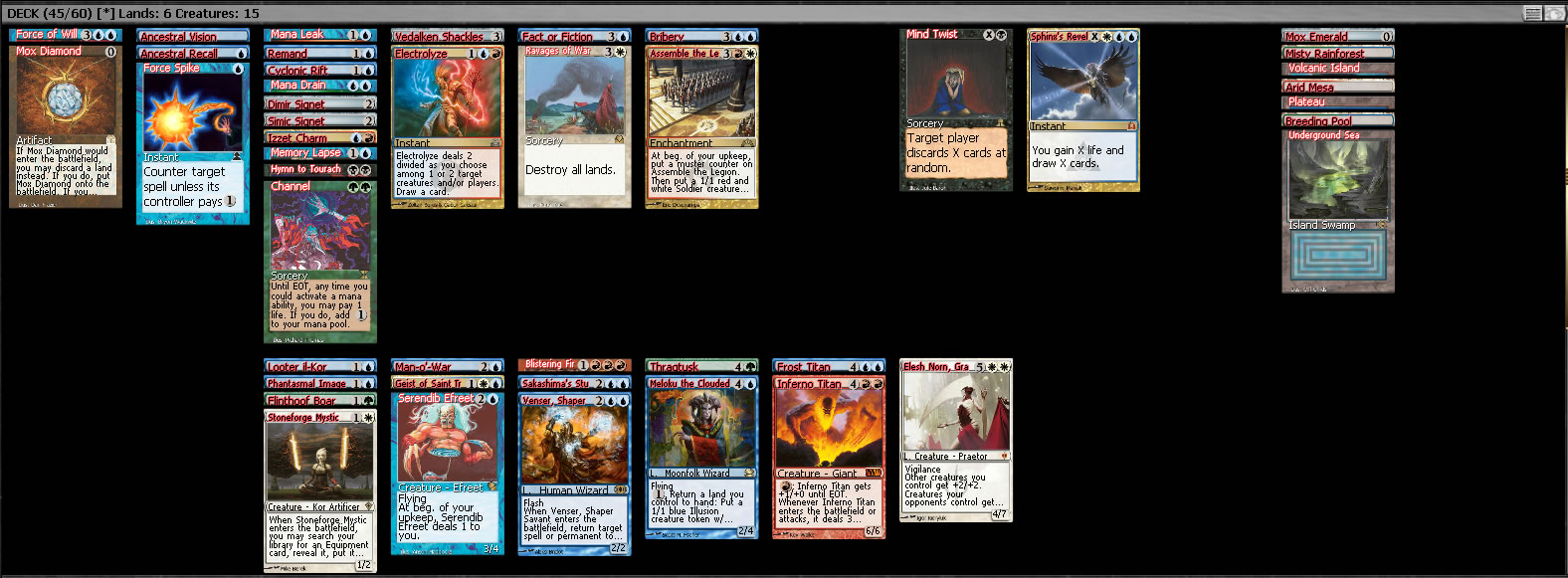One of the things that initially drew me into the Cube format was when Evan Erwin talked about Cube drafting several years ago: his 2009 Magic Cruise Cube Discussion and episode of The Magic Show called “Gleaming the Cube.” One of the main talking points that stuck out from both videos was that the sign of a good Cube is if people see a card go fifteenth pick and think “wow, this card made it back to me fifteenth pick?!?” in shock, as the card would be a powerful card. We’re used to seeing plenty of terrible cards like Trait Doctoring and Search the City going late, and even in a set like Modern Masters, there are cards like Extirpate and Bridge from Below that aren’t very good Draft cards.
That said, even in Cube—a format rife with all-stars and format-definers—we still see cards that we aren’t surprised to see go late. Is this a sign of Cube design failure? In this article, I’ll talk about cards that go late in Cube Draft and how to analyze and approach them by discussing the various categories of cards that go late.
“Support” Cards
Cards like these are the “bread and butter” of a Cube and its archetypes. Nice examples are cards like Go for the Throat and Diabolic Edict—solid cards that will often make a maindeck but that are also cards that people aren’t excited to draft and take early.
For example, look at this sample pack:

A card like Go for the Throat wouldn’t have a chance of being taken early from this pack, and I wouldn’t be surprised to not see it go until the middle of the pack. However, that doesn’t mean that it’s a bad card. Support cards are typically cards that have a redundant effect and for which there are similar analogues in a Cube. As such, you can rely on getting similar cards later (and you can gamble on getting it back on the wheel). I found that this happened in the latest iteration of the Magic Online Cube. In previous versions, I felt that I had to take mana fixing highly because there wasn’t much to go around, but with the recent iteration I could reliably not take the necessary mana fixing and get it on the wheel anyway (even though I should’ve been disciplined and taken it earlier).
Similarly, if you don’t take Go for the Throat and someone takes it from you, you can probably get something like a Diabolic Edict, Shriekmaw, Snuff Out, or any of the myriad of black removal spells that are out there. This also affects aggressive creatures like red two-drops, which we’ve thankfully seen an upsurge in with cards like Gore-House Chainwalker and Ash Zealot. However, because of this, it can sometimes change people’s impressions. After all, if cards like Trait Doctoring go late in normal Cube Draft environments, if a card like Ash Zealot goes late, doesn’t that mean that it’s bad too? Not really; it just means that people may be thinking that they can get those cards later. Speaking of misconceptions, let’s talk about that.
Misconceptions About Cards
When I initially ran Woodfall Primus, there weren’t many cards like it at the time (Shadowmoor) since there were few big Cube-worthy creatures that did something big when they entered the battlefield aside from Sundering Titan and arguably Skeletal Vampire; Triskelion; and Akroma, Angel of Wrath. Woodfall Primus predated cards like the Titan cycle, and as such when I first put it into my Cube, people were scared to play the card because it didn’t align with what they were used to doing with the. Because of that, it went criminally late. Had I taken the card out of my Cube based on that initial chilly reception, I’d have lost out on a card, but people eventually warmed up to it and realized that it was a good card.
However, this doesn’t just affect new cards and people’s impressions of new cards. It could be that people have misconceptions about a card in general due to outsourcing to other formats (“Plated Geopede / Steppe Lynx sucks if I don’t have fetchlands”) and other types of general misevaluation that could change perceptions of cards (“Wheel of Fortune sucks because my opponent draws cards too / Armageddon sucks because it blows up my lands and can be a bad topdeck”), especially if backed up by seeing the card used incorrectly, seeing it not do much, and dismissing the card.
An example of this is using a Savannah Lions in a deck with Myr Battlesphere, which isn’t a good way of building an aggressive deck. In that kind of “this-deck-is-actually-midrange” deck, you could see a card like Savannah Lions perform poorly and dismiss the card. This type of misconception can cause people to devalue the card and cause the card to go later than it should.
There’s an ideology that you can “beat those people with those cards and they’ll see how powerful the card is” that can work, but it isn’t foolproof either since that assumes that the other parties are willing to learn from said use of the card. The person who has misconceptions could just think that you got lucky / they got hosed and just dismiss it and think that the card is still bad. This also doesn’t really work if you don’t Cube with a steady group, which I wasn’t able to do for years.
That said, as a Cube designer, cards going later than they should may mean that the archetype isn’t well-represented, but it’s important to not just base this on a single draft but rather over a longer time period (which again may be difficult if you can’t Cube consistently/don’t have a consistent playgroup). However, it could just be a perception issue, as before people realized the power of red aggro strategies through the Magic Online Cube I saw people dismiss red aggressive cards due to their drawbacks. Once they saw the power of red’s aggressive strategy, those same people jumped on board.
Cards Intended To Go Late
Another category is cards that are intended to go late to increase win percentages / cover weaknesses. This idea was touched on an interview from GP Nashville last year with Zac Hill, Reuben Bresler, MTGCast Eric “Mr. Suitcase” McCormick, and me about the Magic Online Cube (you may want to turn the volume down since the intro theme is pretty high in the mix).
In that interview, Zac talked about how some cards were put into the Magic Online Cube with the knowledge that they would be going late; the idea is that if there are cards that are going to go late, they should be worth their weight by helping decks with problematic matchups. He talked about the use of sideboard-only cards like Red Elemental Blast and Blue Elemental Blast. Because those cards were going to be late picks, the idea that was pitched was that if those cards were going to go late, even if they weren’t going into maindecks their sideboard use would make it so that they contributed to overall win percentage better than a marginal card (like a marginal burn spell/beater.)
For example, in the Esper Tapout Control draft video that I did where Descendent of Kiyomaro did hard work in getting me the win versus a mono-red opponent due to life gain, I drafted the card thinking that it wouldn’t make the maindeck but that it’d make my deck better overall by shoring up a weakness against an aggressive deck.
Like with the Descendent, the main thing with these kinds of cards isn’t so much how well the cards hose certain archetypes, as Red Elemental Blast hoses blue extremely well, but more so how well it helps the color and its archetype as a whole. A card like Smash to Smithereens has the option of being maindeckable, but it’ll probably end up in the sideboard.
As a designer, if I’m deciding between a card like Smash to Smithereens and Red Elemental Blast, the decision point comes down to whether a red deck’s chances of winning the draft will overall improve more through Smash to Smithereens or Red Elemental Blast. Since we don’t have Magic Online’s data crunching, we have to observe the meta as designers to see which is helping more overall. For example, Smash to Smithereens may improve the odds of winning versus a blue deck by 10%, whereas Red Elemental Blast may improve it by 15%, but Smash to Smithereens may add 10% win percentage to the white aggro matchup that relies on equipment.
As discussed in my first article on hoser cards, the use of these kinds of cards can be a powerful tool to help to balance your meta, and the more “niche” cards can be used to further define and tinker with your meta. A cube that needs more artifact removal tools can use something like Smash to Smithereens, whereas a cube that needs more defense versus aggressive hordes can bring in something like Pyroclasm or Whipflare.
That said, it’s harder to include cards that are solely going to be late picks when your cube is on the smaller side. Note how very restrictive intentionally late cards like Red Elemental Blast and Blue Elemental Blast got cut from the Magic Online Cube when it went from 720 cards to 540; this highlights that larger cubes have the luxury of running cards that are strictly sideboard cards if that’s what they want to do. Also, if your cube doesn’t allow sideboards, like Tom LaPille used to do and my podcast co-host Anthony Avitollo still does, that’s another option to take into consideration as the value on strictly sideboard-only cards will almost assuredly be late picks and won’t make maindecks; probably maindeck but more sideboard types of cards like Smash to Smithereens would be a harder sell.
Cards That Are Restrictive In Inclusion
When the Magic Online Cube ran Cruel Ultimatum, I typically could rely on it wheeling when I was in a deck like Grixis Control or Four/Five-Color Control since they were the only decks that wanted it. From a player point of view, it was nice to be able to reliably be able to wheel those kinds of cards since they were essentially free cards for those decks. However, when it was replaced by Rakdos Cackler, I understood that the overall power level was an upgrade.
In the previous section, we talked about how some cards like Red Elemental Blast are harder to include in smaller Cubes, but cards like Cruel Ultimatum are even harder and cards that only interact with a few specific cards are even more so. An example is a card like Progenitus, which is unplayable outside of a deck that has cards like Show and Tell, Eureka, Oath of Druids, or Natural Order since unless the enablers are in the draft those cards are essentially blanks.
To a lesser extent, this happens with non-hybrid multicolor cards, even if it’s not to the degree of cards like Cruel Ultimatum, since it’s obviously harder to include those cards; as such, the decks that can use them are limited. Cards like Desolation Angel; Obzedat, Ghost Council; and Prime Speaker Zegana work remarkably well in decks that that have both colors, but because they can’t be reliably splashed, it’s easy to have them end up in sideboards, especially in a draft with a few people like a four-person draft or a two-person draft variant like Winston or Sealed.
I used to use a maindeck percentage as a metric for how good a card was in my cube, but I found that it didn’t work as intended—it looked more at how those cards positively impacted the format, although unfortunately that’s harder to quantify. Is a card like Obzedat or Angel of Despair contributing more positively to your cube than something like Gerrard’s Verdict or Tidehollow Sculler? Which is making Orzhov decks in your cube better? Do Gerrard’s Verdict decks have a higher win percentage than Angel of Despair decks? It’s one thing to say that a card is objectively better than another; it’s another and alas a much harder question to see if one’s represented deck performs better than the other. And that answer can vary per cube.
Cube is an interesting format because it isn’t just about objective power level because people have conceptions about cards from when they were in Constructed formats in their minds. For example, a Legacy Elves deck can easily put Natural Order and Progenitus into the same deck because it has those tools available, but someone drafting a Cube isn’t going to have that same certainty of not only seeing Progenitus but also having an enabler for it and being in the right deck to be able to take advantage of that circumstance.
A useful thing about these types of cards is that you sometimes can build around the card with the assumption that those cards will be coming back; for example, I could usually rely on Wildfire and Burning of Xinye coming back in the Magic Online Cube. It’s similar to how you can sometimes rely on cards like Grinning Ignus wheeling for Storm and for Dampen Thought wheeling for the Arcane deck.
Going back to Evan’s 2009 Magic Cruise Cube Discussion, he talked about how some cards like Entomb that he only wanted for the Reanimator deck because, let’s be honest, Reanimator is the only deck that wants cards like Entomb and Bazaar of Baghdad even with the non-Reanimator corner cases that those cards have. Because of that, those cards may go later and end up in sideboards more often than their power level implies because no one is in that archetype, which can happen if the card is seen in the later packs.
This ultimately comes down to overall power level for the archetypes involved. Progenitus and Natural Order may be a powerful combo, but it’s up to the Cube designer to decide whether a card like Progenitus is worth the overall power level in terms of how much win percentage is increased for green decks with Natural Order / Eureka or blue decks with Show and Tell and whether that’s a positive contribution to your Cube and green/blue sections. Personally, I feel that cards that are unplayable without specific other cards don’t do enough to justify their slot, especially in smaller cubes.
Suboptimal Cards
Lastly and perhaps obviously: bad cards.
People don’t consciously make decisions that make their chances of winning worse and would balk if someone were to say that they were, but those people may subconsciously do so a la Stuck In The Middle With Bruce. In a similar fashion, no one tries to put bad cards into their Cube, but people can subconsciously sell themselves on cards that just aren’t good. These kinds of cards should get weeded out of a cube quickly. A lot of the Cube experience is about the journey of evaluation and lessons learned, such as learning from past mistakes as Justin pointed out in last week’s article. We can use the lessons from this article to look at a card like Goblin Cadets:
We can look at a card like Goblin Cadets and see that it can be included in a Cube (it’s presently included in the Magic Online Cube) for the reason of it being an intentionally late pick to hose slow control decks and combo decks, but it isn’t really that good at that either. In theory, it has a purpose of hosing those archetypes, but the high amount of creature combat even against slow decks makes this a card that is worse in reality than it is in theory.
You may have noticed that in this article I’ve said that a lot of the decisions are up to you. Evaluating late picks is the Cube designer’s equivalent of reading tea leaves; it’s not a perfect tool. Sometimes a card like Woodfall Primus is incorrectly dismissed, and maybe a card like Venser, the Sojourner doesn’t get maindecked a lot but is worth it for the decks that can use it. However, it’s a useful tool to realize the role some cards play in a Cube. While most people think of cards like Vedalken Shackles, Sword of Fire and Ice, and Goblin Guide as the embodiment of Cube, even the late picks play a vital role, and I hope that this article has given you some insight into the role that those cards play.
May all of your opening packs contain Sol Rings!
Also, check out the following 45 cards that I recently drafted (coincidentally, because no one was in blue, blue cards were going around very late, and thus I was able to get this monstrosity). How would you have built it? Talk about it in the comments!
@UsmanTheRad on Twitter
My blog featuring my updated pauper and regular cube lists: I’d Rather Be Cubing
Cube podcast that Anthony Avitollo and I co-host: The Third Power








